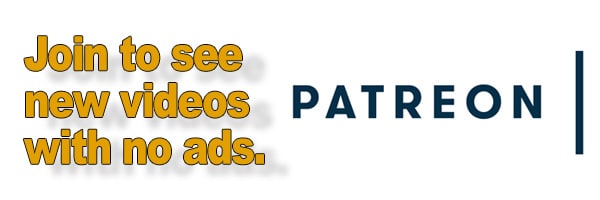As an Amazon Associate DcSoundOp earns from qualifying purchases.
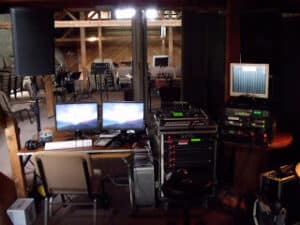
In these articles dedicated to the subject of practical recording, I’d like to share a detailed look at what goes into creating high quality audio recordings in the real world environments in which I work most often. In this article, we’ll start by taking a look at the recording industry as it currently applies to the everyday musician, artist and career audio technician. This is a topic that enjoys much discussion and debate at all levels, and one where competing ideas and approaches can be equally valid in many situations, and always open to interpretation and exploration. As with any creative or technical process, a solid understanding of fundamentals will serve you well throughout your career, more so then any individual piece of gear ever will. Let’s start by looking at where we are today with audio recording, I’ll offer my perspective of how we arrived here during my time in the industry and what steps along the way have left a lasting impression on my approach to audio.
If you’ve spent any amount of time recording audio, trying to capture a quality recording in your home or home-studio space, you’re already aware some of the different obstacles you may come up against, even when you’re working in a (relatively) controlled environment. Outside street noise, HVAC fans & motors, radiators that groan, lighting fixtures that hum, dimmers that buzz, pipes that rattle… the list of show stopping annoyances during a recording session can seem virtually endless. Professional recording studios invest untold sums of money in an effort to mitigate these various problems, aiming in the process, to create a controlled environment free of outside distractions and interruptions.
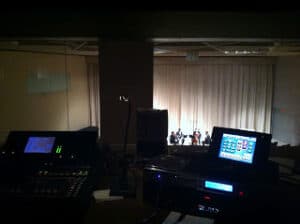 **Monetizing your online content is a huge subject on it’s own; One that I will address in a future post dedicated to exploring the various methods, tools and points of view surrounding the subject.** Although it is always a pleasure to work in such an environment, the reality for many musicians and audio technicians alike, is that working in a professional studio is just too costly for the majority of projects we work on. With the fast paced internet world we have grown accustomed to, content has become King! Those who are able to produce quality content quickly, affordably and on a regular basis are able to leverage that content effectively to drive interest in their projects. The idea being that quality content, released on a regular basis will gain a following and drive subsequent content to be viewed by an ever growing audience. This (Constant Content Model or “CCM”) as I’ll refer to it, is one of the most popular models we are working with these days, of course it’s not the only option out there, but as a working artist, the feedback is instant and the cost of entry is incredibly low compared to traditional approaches.
**Monetizing your online content is a huge subject on it’s own; One that I will address in a future post dedicated to exploring the various methods, tools and points of view surrounding the subject.** Although it is always a pleasure to work in such an environment, the reality for many musicians and audio technicians alike, is that working in a professional studio is just too costly for the majority of projects we work on. With the fast paced internet world we have grown accustomed to, content has become King! Those who are able to produce quality content quickly, affordably and on a regular basis are able to leverage that content effectively to drive interest in their projects. The idea being that quality content, released on a regular basis will gain a following and drive subsequent content to be viewed by an ever growing audience. This (Constant Content Model or “CCM”) as I’ll refer to it, is one of the most popular models we are working with these days, of course it’s not the only option out there, but as a working artist, the feedback is instant and the cost of entry is incredibly low compared to traditional approaches.
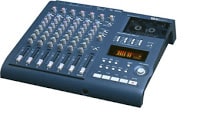 For an artist, the decision to follow this trend or to take a different path is for the individual to decide as they approach each new project. There will always be good reason to take certain projects into a professional studio as budgets and time allow, but even those projects can often profit from applying the CCM approach. For as long as bands have gone to professional studios to record, there has been (pre-production) work to be done. Hashing out song ideas, arrangements and production details has often been done outside of the studio, even by those who can afford to take every project to a professional studio for final tracking. Now that we’re growing more comfortable with the idea of recording outside of the studio environment, let’s take a look at the different technical evolutions we have seen over the past twenty years.
For an artist, the decision to follow this trend or to take a different path is for the individual to decide as they approach each new project. There will always be good reason to take certain projects into a professional studio as budgets and time allow, but even those projects can often profit from applying the CCM approach. For as long as bands have gone to professional studios to record, there has been (pre-production) work to be done. Hashing out song ideas, arrangements and production details has often been done outside of the studio, even by those who can afford to take every project to a professional studio for final tracking. Now that we’re growing more comfortable with the idea of recording outside of the studio environment, let’s take a look at the different technical evolutions we have seen over the past twenty years.
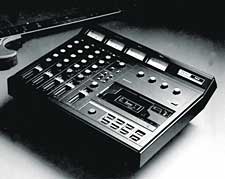 Simplicity was the driving force behind the success of the PortaStudio concept. With the actual Tascam Portastudio line enjoying a production run of over thirty years, and many offerings by other manufacturers (Yamaha & Fostex being popular choices) enjoying similar success. The common attraction to this form factor has always been ease of use and general simplicity. These machines gave you the basics, just what you needed, with very few extra frills. The big frills features in the 424MkIII included a humble RTZ button, a PAIR of Aux sends and a mixer that boasted eight channels which could be assigned as needed to the various tracks… these extras were a BIG deal for us at the time! As recently at the early 1990’s, songwriters, musicians and bands who had interest in recording their work would generally start out small…very small. I remember fondly buying my first multi-track recorder, costing just over $400, the venerable Tascam Portastudio 424MkIII. This wondrous little machine offered everything a young band could imagine needing to capture their newest songs, hash out new ideas and explore new ways of creating music. Out of all the recordings I have done since, and with all of the amazing technology and equipment I have been tasked with operating over the years, the lasting memories are of days and weeks spent toiling over this little machine in my parents basement. Working endlessly together with friends, trying out every new idea that came to mind and experiencing the collective excitement of finally finishing a “mix” and bouncing it out to as many cassettes as we could scrounge up in order to pass them out amongst friends and family…. those were good days.
Simplicity was the driving force behind the success of the PortaStudio concept. With the actual Tascam Portastudio line enjoying a production run of over thirty years, and many offerings by other manufacturers (Yamaha & Fostex being popular choices) enjoying similar success. The common attraction to this form factor has always been ease of use and general simplicity. These machines gave you the basics, just what you needed, with very few extra frills. The big frills features in the 424MkIII included a humble RTZ button, a PAIR of Aux sends and a mixer that boasted eight channels which could be assigned as needed to the various tracks… these extras were a BIG deal for us at the time! As recently at the early 1990’s, songwriters, musicians and bands who had interest in recording their work would generally start out small…very small. I remember fondly buying my first multi-track recorder, costing just over $400, the venerable Tascam Portastudio 424MkIII. This wondrous little machine offered everything a young band could imagine needing to capture their newest songs, hash out new ideas and explore new ways of creating music. Out of all the recordings I have done since, and with all of the amazing technology and equipment I have been tasked with operating over the years, the lasting memories are of days and weeks spent toiling over this little machine in my parents basement. Working endlessly together with friends, trying out every new idea that came to mind and experiencing the collective excitement of finally finishing a “mix” and bouncing it out to as many cassettes as we could scrounge up in order to pass them out amongst friends and family…. those were good days.
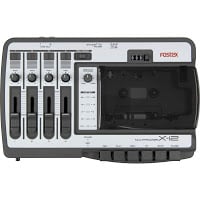 An example of this would be when teaching the concept of grouping instruments in a mix. When I show this concept to someone on a large console (or DAW) it can be confusing at first…. the questions I typically get are along the lines of… “why would you want to group things together when you have so many available channels”… which is a perfectly reasonable question. The answer to that question can vary depending on the application, and can lead to more advanced concepts such as group compression, parallel dynamic processing or even the use of matrix routings for various tasks. These are all great ideas to study, but are certainly a lot to digest when first learning to build a mix.The simplicity inherent with these machines lead naturally to the desire to study and explore the fundamentals of capturing quality audio and manipulating it effectively. While some will see these machines as having major limitations, for young musicians (young in experience, not necessarily in age) interested in learning the fundamentals, these limitations are a phenomenal gift. Concepts like “fixing it in the mix” are simply not an option, the workflow you naturally adopt with this type of machine forces creative thinking and helps sharpen your abilities to create a sound and more so, to commit to a sound an move on with creating good music.
An example of this would be when teaching the concept of grouping instruments in a mix. When I show this concept to someone on a large console (or DAW) it can be confusing at first…. the questions I typically get are along the lines of… “why would you want to group things together when you have so many available channels”… which is a perfectly reasonable question. The answer to that question can vary depending on the application, and can lead to more advanced concepts such as group compression, parallel dynamic processing or even the use of matrix routings for various tasks. These are all great ideas to study, but are certainly a lot to digest when first learning to build a mix.The simplicity inherent with these machines lead naturally to the desire to study and explore the fundamentals of capturing quality audio and manipulating it effectively. While some will see these machines as having major limitations, for young musicians (young in experience, not necessarily in age) interested in learning the fundamentals, these limitations are a phenomenal gift. Concepts like “fixing it in the mix” are simply not an option, the workflow you naturally adopt with this type of machine forces creative thinking and helps sharpen your abilities to create a sound and more so, to commit to a sound an move on with creating good music.
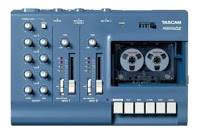 With some basic 4-Track sessions under our belt, we’ve learned some fundamentals, we understand some basic techniques (mic placement, channel grouping, track bouncing, punch-in overdubs, and some basic gain staging concepts) but we’re starting to understand through exploration, what the limitations of this format can be, and we inevitably begin to want more and more control over our work. This is the point where recording outside of a professional studio has taken MAJOR strides in the past 20 years. Although there have been home based recording products available to consumers for many decades, equipment prior to the 1990’s was typically very expensive, often very large physically and in many cases not very user friendly for the average musician to operate. Not to say that it was previously impossible to build a home recording setup that produced professional results, but the technology that emerged in the early 1990’s would create a paradigm shift in the cost and availability of this type of gear to the average end user. Sitting in front of a four track machine for the first time, you are immediately thinking about practical grouping… You’ve got a whole band to record and only four tracks to work with… the concept of grouping like instruments, processing them as groups and committing to these choices as you bounce your groups down to create more space, is one of the first steps you will naturally take. The humble 4-Track machine gives you just enough without getting in the way or slowing you down. There are no computer menus to learn, no banks of sound effects to audition, no plug-ins to loose yourself exploring for hours on end… just a simple tool for capturing an honest recording. In my opinion, this is the PERFECT platform for learning the basics of working with audio. Let’s take a look now at the next evolution; what happens when we outgrow the humble 4-Track?
With some basic 4-Track sessions under our belt, we’ve learned some fundamentals, we understand some basic techniques (mic placement, channel grouping, track bouncing, punch-in overdubs, and some basic gain staging concepts) but we’re starting to understand through exploration, what the limitations of this format can be, and we inevitably begin to want more and more control over our work. This is the point where recording outside of a professional studio has taken MAJOR strides in the past 20 years. Although there have been home based recording products available to consumers for many decades, equipment prior to the 1990’s was typically very expensive, often very large physically and in many cases not very user friendly for the average musician to operate. Not to say that it was previously impossible to build a home recording setup that produced professional results, but the technology that emerged in the early 1990’s would create a paradigm shift in the cost and availability of this type of gear to the average end user. Sitting in front of a four track machine for the first time, you are immediately thinking about practical grouping… You’ve got a whole band to record and only four tracks to work with… the concept of grouping like instruments, processing them as groups and committing to these choices as you bounce your groups down to create more space, is one of the first steps you will naturally take. The humble 4-Track machine gives you just enough without getting in the way or slowing you down. There are no computer menus to learn, no banks of sound effects to audition, no plug-ins to loose yourself exploring for hours on end… just a simple tool for capturing an honest recording. In my opinion, this is the PERFECT platform for learning the basics of working with audio. Let’s take a look now at the next evolution; what happens when we outgrow the humble 4-Track?

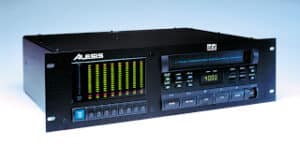
Introduced at the 1991 NAMM show and released into production a year later in 1992, for the price of $3995, was the Original “BlackFace” 16-Bit ADAT machine. The original ADAT could record 8-tracks at 16-Bit/48kHz, with the ability to scale up to 128 tracks by tying multiple (up to 16) units together… all utilizing inexpensive and readily available S-VHS tapes. This all sounds pretty mundane to us sitting here in 2012, but at the time of it’s release, the closest competing product available in the marketplace was offered by Sony, at a staggering cost of $150,000. It’s amazing to think four thousand dollars for eight tracks as being a good deal, but by the standards of the day, it was simply too good to pass up. Everyone who had any interest in recording it seemed, would end up owning at least a pair of ADAT machines, the home studio landscape would never be the same again… The Project Studio was born.
Amazon and the Amazon logo are trademarks of Amazon.com, Inc, or its affiliates.
